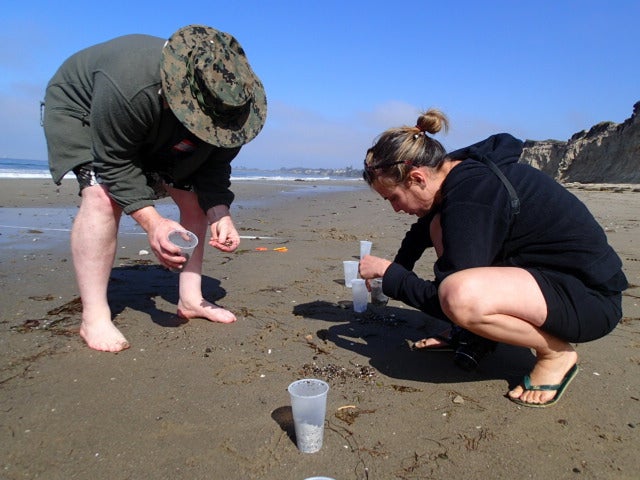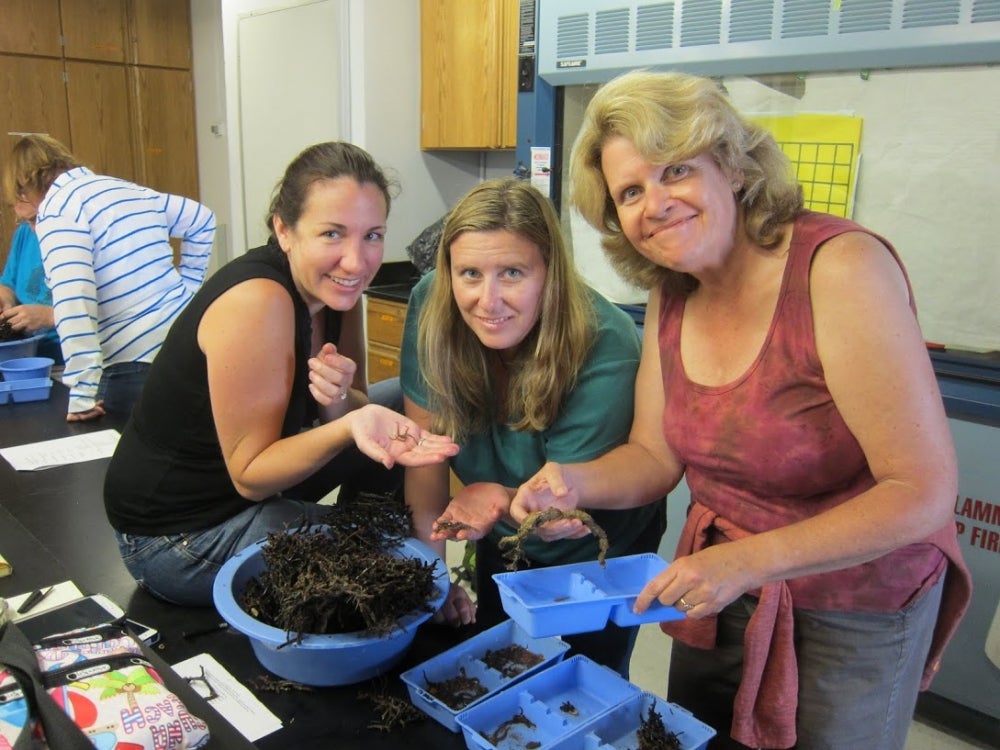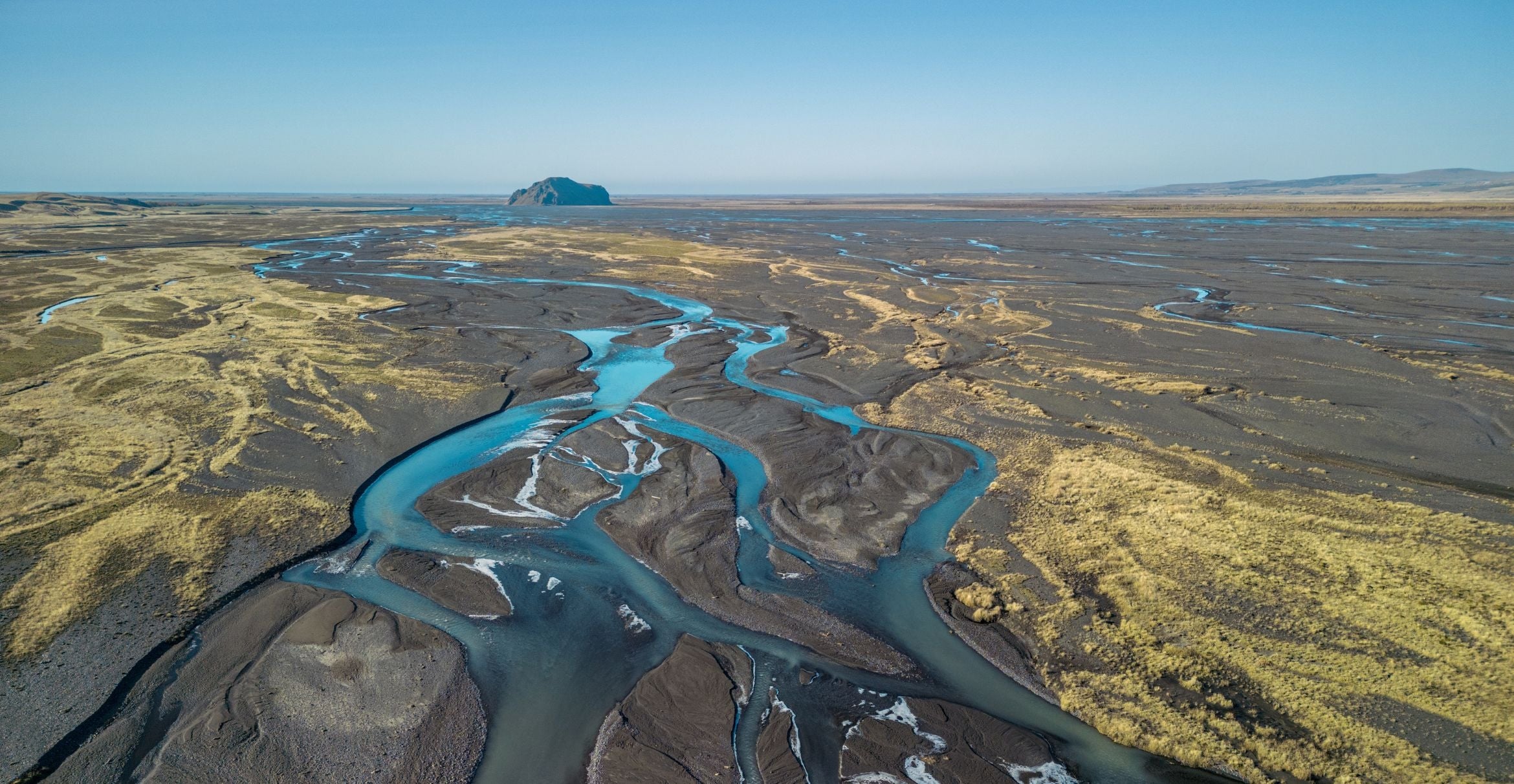

Twenty-three middle- and high-school science teachers took advantage of the lull of summer break — not to mention the weather — to hang out at UC Santa Barbara’s Campus Point last week. Armed with hand tools, they dug into the sand, exploring for crabs or examining limpets that clung to the rocks. Their goal? To expand their teaching repertoire to include hands-on and project-based science education, things they hope to bring to their students come fall.
Beachcombing was only part of the weeklong teacher professional development workshop and a new collaboration among UCSB’s Marine Science Institute (MSI), the Channel Islands National Marine Sanctuary (CINMS), the environmental literacy-oriented organization NatureBridge and the Channel Islands National Park (CINP). Themed “Teaching Environmental Science in a Changing Climate,” the workshop invited local science teachers to do as scientists and researchers do, with modules that trained them in real-world data collection, utilization and research — added to tools and methods the teachers can use to adjust the lessons for their students.
“We’ve been providing professional development for teachers designing lesson plans that they take into their classrooms,” said Scott Simon, program manager for MSI’s education and outreach. For the past five years, with financial support from a multimillion-dollar National Science Foundation grant, UC Santa Barbara, along with Colorado State University, Michigan State University and the Cary Institute of Ecosystems Studies, has been connecting with elementary and secondary school science teachers in an effort to bring real-world research to the classrooms and the next generation of would-be scientists out into the field.
“A lot of these kids never get outside, so there’s a big push to get them outside and have some real experiential learning,” said Simon.
Last week, the teachers were the students as they visited the REEF (Research Experience and Education Facility), MSI’s interactive aquarium; dissected holdfasts — the part of kelp that anchors them to the sea floor; and learned about the complex ecology of the sandy beach. Topics included biodiversity, marine science, water budgets, ocean acidification and carbon cycling.
The workshop also served to help teachers implement Common Core standards and get a jump on putting in place the upcoming Next Generation Science Standards.
“It represents a pretty big shift in how teachers are going to be teaching science content,” said Megan Jakubowski, director of education for NatureBridge in Southern California. Among the changes in teaching is a focus on integrating content with practice — learning and memorizing not just the concepts but how to do the science.
Using real-time data and current practices along with resources provided to the community by institutions such as UCSB, CINMS or CINP also connects the students to current issues and trends, such as climate change.
“This is science as stewardship, and it’s a way for students to learn not just about the sandy beach ecology, which is more complex than you would imagine, but also to do something to inform the larger scientific community about current and changing conditions,” said Jakubowski.
New standards and guidelines aside, however, the week was also one of engagement and fun for the teachers, as they absorbed information and practices with which they hope to inspire their students in the fall.
“What inspired me was to be able to take a new perspective and bring it into the classroom or take my students into something that’s relative in their community and help them make that connection,” said Kelly Vergeer, who teaches middle school science in Carpinteria.
“I knew a tiny bit about kelp,” she said of her “favorite part” — learning about the giant kelp that are just offshore at the Santa Barbara Coastal Long Term Ecological Research (SBC-LTER) project — “but now I have this greater appreciation for the biodiversity and holdfasts.”
While new, the MSI/NatureBridge collaboration has already been a fruitful one, said Simon, and one that he hopes will continue as the marine institute completes its five-year educational grant cycle and prepares to seek more funding.
“It’s a really good partnership, and the cohort of teachers that we have is phenomenal,” he said.



